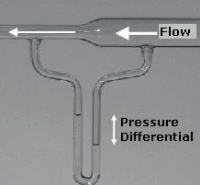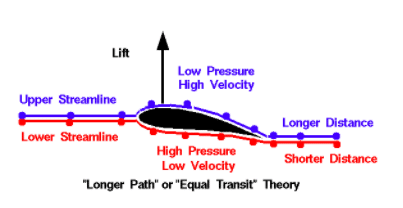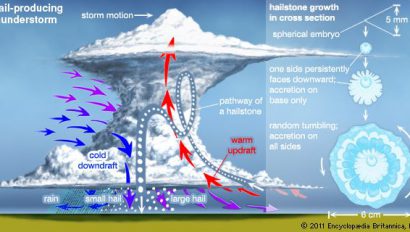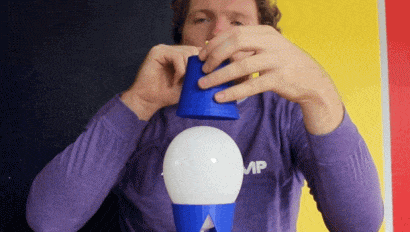Bernoulli’s Principle: In Flight, Firefight, and Other Cool Things
September 20
Wondering about Bernoulli’s Principle? We’ve got you covered! We’ll explore the ins and outs of this dynamics concept that focuses on the flow of fluid and pressure. Get insights on the Bernoulli Effect’s real-world applications, including how it presents itself in storms and airplane travel. Plus, check out our fun and exciting DIYs you can do to see this principle in action.
Interested in learning more about Bernoulli’s Principle and other awesome scientific concepts? Sign up for camp with us for the 2025 season or have your school join us for a trip to AstroCamp!
Table of Contents
- What is Bernoulli’s Principle?
- What is the Bernoulli Effect?
- Who is Daniel Bernoulli?
- Bernoulli’s Principle Differential Equation
- Real-Life Applications of Bernoulli’s Principle
- Experiments for Bernoulli’s Principle to Try at Home
- Bernoulli’s Principle, Explained
- Dive Deeper with AstroCamp!
What is Bernoulli’s Principle?
Bernoulli’s Principle is a fluid dynamics concept, stating that as the speed of a fluid increases, its pressure decreases. This principle is important, because it helps explain natural phenomena and enables engineers to create everyday designs that function properly and safely. Sign up for one of AstroCamp’s overnight summer camps to discover more about awesome scientific principles that occur in our world.

What is the Bernoulli Effect?

The Bernoulli Principle is the foundation that allows the Bernoulli Effect to take form, and the effect itself refers to the actual outcomes and everyday applications we can observe. The effect can be seen in practical situations when velocity and pressure changes occur.
Who is Daniel Bernoulli?
Wondering about the famous scientist who gives this principle its name? You’re in luck! Daniel Bernoulli was a Swiss mathematician and physicist who lived during the 1700s. His family was a powerhouse in the world of mathematics and he was a prominent Bernoulli scientist in his own right. Through his specialized work in fluid dynamics, the Bernoulli Effect was born, and we now have valuable insights into the relation of fluid velocity and pressure.
Bernoulli’s Principle Differential Equation
Bernoullis’s Principle differential equation refers to the actual equation used to calculate the relationship between fluid pressure and elevation in various scenarios. The equation is y′+a(x)y=g(x)yν.
How To Solve a Bernoulli Equation
In order to solve Bernoulli’s Principle differential equation, you can insert your known values into it, including velocity, pressure, and heights. This can help you learn more about the relation between two points in a steady streamline. Tip: if you add up the energy from the speed and pressure, and energy from the height of the two points, the total will be the same.
When to Use the Bernoulli Equation
Ready to see the math at work? You can use the Bernoulli Equation to analyze fluid flows in many scenarios, including behavior in constrictions, and the common measurement of velocity with a Pitot Tube.
Real-Life Applications of Bernoulli’s Principle
Bernoulli’s Principle is not just a concept. In fact, we witness real-life applications quite often and there are many Bernoulli’s Principle examples that we can encounter almost every day. Quiz time! Why are airplanes able to fly? If you answered Bernoulli’s Principle, you aced it. This is one of the most common ways we can see this concept in action.
Other awesome practical Bernoulli’s Principle examples include the flow of water through small places like pipes, the way blood moves in our bodies, and how car carburetors function.
Bernoulli’s Principle for Flight: How Do Planes Fly?

So, how do planes fly? Let’s learn a bit more about Bernoulli’s Principle for flight to answer this common question. Planes are primarily able to fly due to the air speed around their wings. Their wings are shaped in order to enable air to travel quickly over the wing’s top and slower under it. Bernoulli’s Principle states that air moving fast creates lower pressure, and the pressure is higher underneath the wing than it is above it. This difference creates lift, which is the reason planes can stay in the air with ease.
Bernoulli’s Principle: Firefighting
Bernoulli’s Principle can also be demonstrated in modern firefighting practices. Bernoulli’s Principle in firefighting refers to the way firefighters rely on the concept’s pressure findings to push smoke out of a burning building using fans. By leaving a space between the fan and a hallway or window, more air is pushed into the building, forcing the smoke out more quickly. Bernoulli’s Principle of fire helps put out fires more easily—and saves lives in the process!
Bernoulli’s Principle: Supercell Storms
In strong supercell thunderstorms, wind moves upwards at over 90mph. Fast-moving air creates an area of low pressure, or a partial vacuum. Nature abhors a vacuum, so nearby air rushes in to join the updraft. This skyward flow can be powerful enough to suspend grapefruit-sized hail.
The tendency of a speeding air current to suck in surrounding air molecules stems from the same idea that gets airplanes off the ground: Bernoulli’s Principle. The faster a fluid moves, the lower its pressure.

Bernoulli’s Principle: Carburetors
The carburetor is the precursor to modern automobile and aircraft engines. Using Bernoulli’s Principle to control the flow of fuel and air, it allowed automobiles and airplanes to control their speed and acceleration with relatively high precision. More efficient methods have since been designed, but without the basis of Bernoulli’s Principle these machines would never have been developed in the first place.
Experiments for Bernoulli’s Principle: Try at Home!
Now that you’ve learned about this exciting concept, it’s time to try it out for yourself! There are several easy DIY experiments for Bernoulli’s Principle you can do at home. Do you love science experiments? Check out some of AstroCamp’s awesome STEM activities we offer at camp and sign up today to join in on the fun!
Bernoulli Bag Experiment
All you need is moving air and something to reveal its motion! A long, narrow bag and a working set of lungs are the perfect tools. Try to blow up eight feet of plastic bag like you would a balloon and you’ll find yourself struggling for air. Instead, hold the bag’s opening ten inches from your face, and blow into it across the gap. What’s the difference?When your breath travels through a volume of air before reaching the bag, Bernoulli’s Principle does most of the work for you! Your exhalation is a fast flow, so it creates a sink of low pressure moving into the plastic bag. Nearby air rushes in to fill the partial vacuum, and before you know it, the bag is fully inflated.

Bernoulli’s Ping Pong Ball Experiment
Using a hair dryer to levitate a ping pong ball is a classic do-it-at-home science experiment. It utilizes two basic principles to keep the ball hovering in the air. The first principle is the transfer of momentum from the moving air particles to the ping pong balls. Basically, the moving air hits the ball and exerts a force upwards on the ball. This is fairly intuitive and straightforward. Bernoulli’s Principle is the law responsible for keeping the ball contained in the airstream and it is much more complex and interesting.
Bernouli’s Principle states that the faster a fluid or a gas move around an object, the less pressure they exert on it. What this means for the ping pong ball is that as the air moves around it, there is less pressure pushing on it from the sides.
However, if the ball tries to leave the airstream (because of the collisions from the moving air or due to gravity) it will encounter some stationary air that exerts a higher pressure back on the ping pong ball. Essentially, the ball is encountering a wall of static air that bounces the ball back into the airstream. Now because the wall is made of air, it doesn’t take too much force to break the barrier, but as long as you keep the hair dryer fairly steady you should be able to keep the ping pong ball levitating for a while. Sadly, hair dryers didn’t exist back in Bernoulli’s day, but we’d like to think he would have had fun with this experiment if they had.
Exploring Bernoulli’s Principle With Air and Balloons
Imagine trying to dig a hole in a pool of water: as soon as some of the water gets moved out of the way, the surrounding water rushes in to take its place. Air does the same thing: whenever it moves, the lower pressure draws air in around it!
The cup and straw demonstration shows this nicely, and it’s also a great experiment to try at home! By taking each apparatus and blowing into it, we can see there is a pretty huge difference.

Inside the cup, air is moving quickly. This causes a lower pressure inside the cup than outside, and air that tries to fill up the space suctions the balloon in place. Alternatively, the cup with holes in the sides allows the surrounding air to help out. Very similar to the Bernoulli Bag, nearby air joins in creating a larger column of air that can lift, and even suspend, the balloon.

We know this looks like a trick, because it’s hard to tell from watching that he is exhaling vigorously in both cases. If you don’t believe us, definitely try it yourself! Of course, it is possible to hold the balloon into the cup by inhaling, but it’s actually more difficult to suck up the balloon from a short distance away! The difference in pressure from blowing fast moving air into the cup is more effective at sucking up the balloon.
Levitate a Soda Can
All you need is an empty soda can and a mug big enough to contain it.
Place the can inside the mug and blow air into the gap between the two containers. Your breath moves faster than the surrounding air, so it creates an area of low pressure around the sides of the can. Stagnant air trapped underneath the can expands to fill the partial vacuum, pushing the can upwards. With a little practice, you’ll be able to jump the can from one mug to another!
Bernoulli’s Principle, Explained
Bernoulli’s Principle is so much more than just a fluid dynamics concept—it’s a way to better understand science and the world around us. We’ve just scratched the surface, but if you want to boost your science knowledge, be sure to dive into Bernoulli’s Theorem to uncover even more about fluid, speed, and pressure.
So, what is Bernoulli’s Principle? Now that you have a better grasp of the concept, you can answer this question with ease—and share your findings with friends. Keep a lookout for all the ways you can see this principle in action.
Dive Deeper with AstroCamp!
Want to learn more about Bernoulli’s Principle and explore the exciting world of science even further? If you love experiential learning and have a passion for adventure, AstroCamp is the place for you. Our knowledgeable instructors are ready to teach you about the wonders of space and we’re proud to be one of the best overnight camps in Southern California. Explore our Summer 2025 programs and check out the science school trips we have available. We hope to see you soon!
